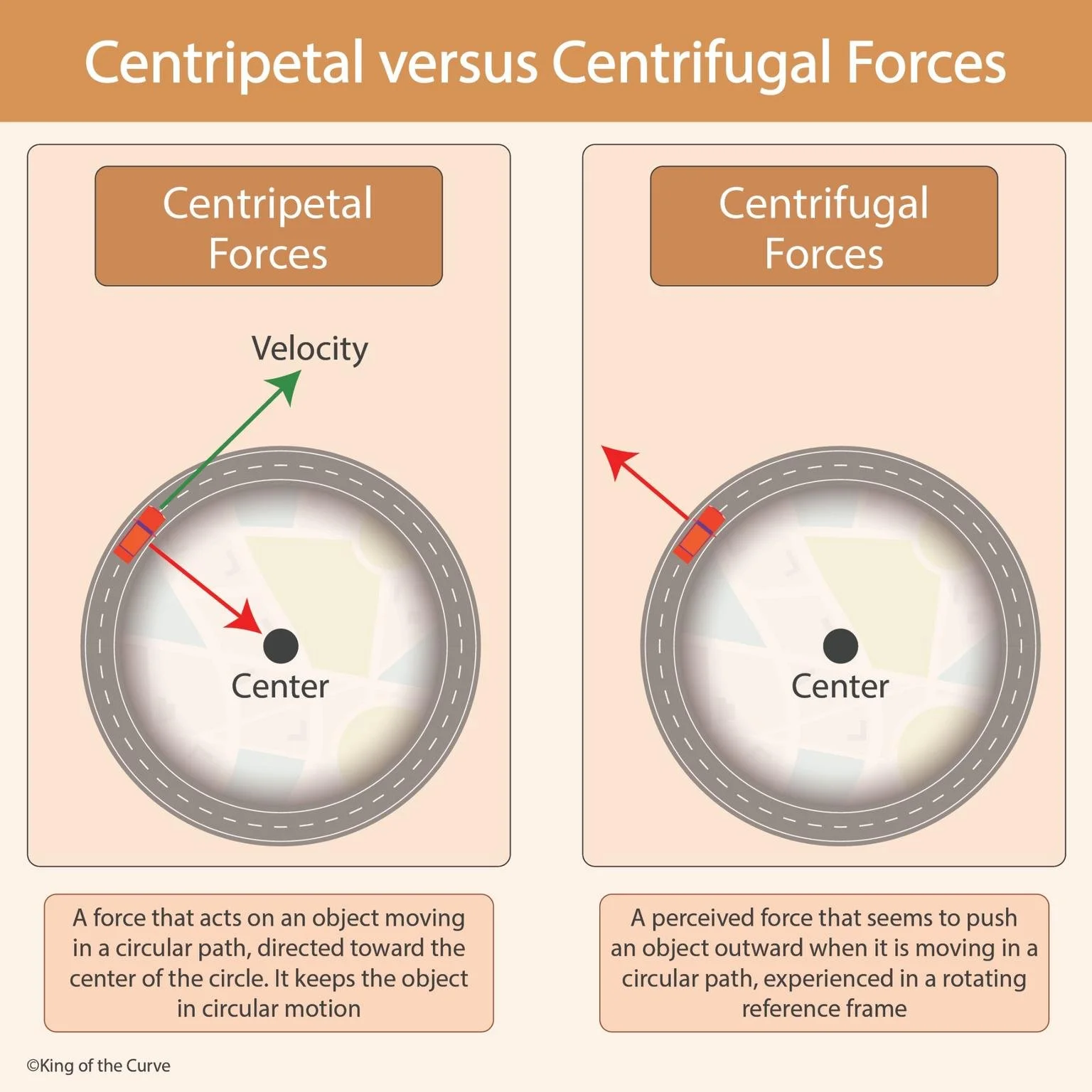🎡 Centripetal vs Centrifugal Force: What’s Real and What’s Not? (MCAT Physics Visual)
Circular motion is a classic MCAT concept—and a sneaky one. Students often confuse centripetal and centrifugal forces, but only one of them is real in physics terms. If you’ve ever felt thrown outward in a spinning car, you’ve experienced this firsthand.
🔍 Why This Is High-Yield for the MCAT
On Test Day, you’re expected to:
Analyze forces in rotating systems
Understand reference frames
Apply Newton’s laws to circular motion
And yes, questions can ask about why centrifugal force is “fictitious.”
🧲 Centripetal Force: The Real Deal
Definition:
A force that acts on an object moving in a circular path, always directed toward the center.
📌 Key Facts:
Keeps objects in circular motion
It’s a net inward force
Examples: Tension in a string, gravitational force in orbit, friction in car tires
🧮 Formula:
- m = mass
- v = velocity
- r = radius of circular path
🌪️ Centrifugal Force: The Illusion
Definition:
A perceived outward force that seems to push an object away from the center—but it only appears in a rotating reference frame.
📌 Key Facts:
Not a real force (in Newtonian mechanics)
Helps explain why you feel “pushed” outward in a spinning ride
Used in engineering and non-inertial frame problems
🔁 Summary Table
| Force Type | Direction | Real or Fictitious? | When It Applies |
|---|---|---|---|
| Centripetal | Toward center | ✅ Real | In any circular motion (Newton’s laws) |
| Centrifugal | Away from center | ❌ Fictitious | In a rotating (non-inertial) frame |
🧠 MCAT-Style Tip
Sample Question:
A child in a spinning merry-go-round feels like they're being pulled outward. What force is actually acting on them?
Correct Answer:
Centripetal force is pulling them inward—what they feel as being thrown outward is the fictitious centrifugal force.
✅ Final Takeaways
Centripetal force keeps you moving in a circle—it’s real.
Centrifugal force is a perceived effect of being in a non-inertial (rotating) frame.
Use the formula mv2/r to calculate centripetal force on the MCAT.
📲 Master Motion with KOTC
Don’t just memorize physics—visualize it.
👉 Get Daily QOTDs
👉 Try the Adaptive Physics Qbank
👉 Explore the Visual Concept Library
Frequently Asked Questions (FAQs)
-
Aim for 4-6 focused hours, ensuring you incorporate breaks to avoid burnout.
-
Practice mindfulness techniques, take practice exams under realistic conditions, and maintain a balanced lifestyle.
-
Set short-term goals, seek support from mentors, and reward yourself for small achievements.
-
Regular exercise improves focus, reduces stress, and enhances overall mental clarity.
-
KOTC offers personalized learning tools, gamification features, and adaptive question banks to help students stay on track without burnout.


